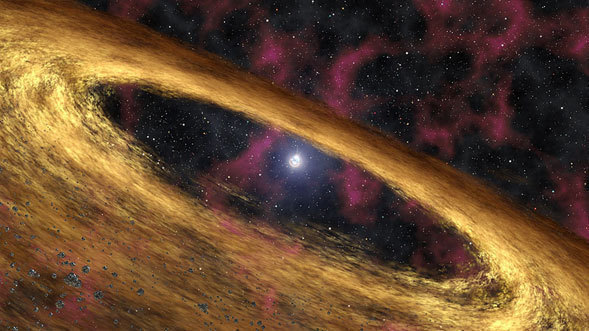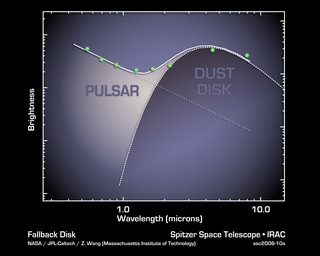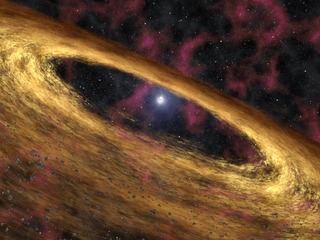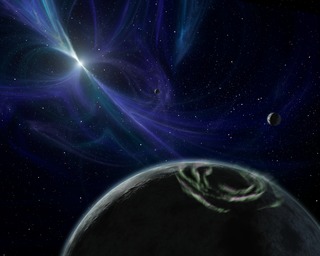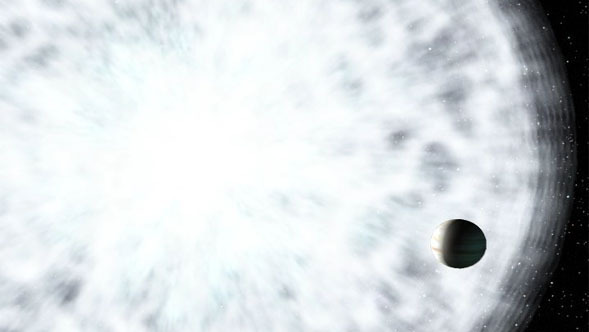
Credit: NASA/JPL-Caltech/R. Hurt (SSC)
Artwork • April 5th, 2006 • ssc2006-10b
ssc2006-10b
This artist's concept depicts a type of dead star called a pulsar and the surrounding disk of rubble discovered by NASA's Spitzer Space Telescope. The pulsar, called 4U 0142+61, was once a massive star until about 100,000 years ago when it blew up in a supernova explosion and scattered dusty debris into space. Some of that debris was captured into what astronomers refer to as a "fallback disk," now circling the remaining stellar core, or pulsar. The disk resembles protoplanetary disks around young stars, out of which planets are thought to be born.
Supernovas are a source of iron, nitrogen and other "heavy metals" in the universe. They spray these elements out into space, where they eventually come together in clouds that give rise to new stars and planets. The Spitzer finding demonstrates that supernovas might also contribute heavy metals to their own planets, a possibility that was first suggested when astronomers discovered planets circling a pulsar called PSR B1257+12 in 1992.
About the Object
- Name
- 4U 0142+61
- Type
- Star > Type > Variable > Pulsating
- Star > Circumstellar Material > Disk > Debris
